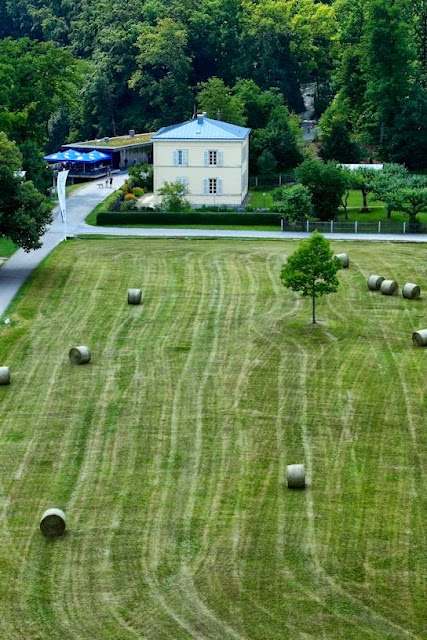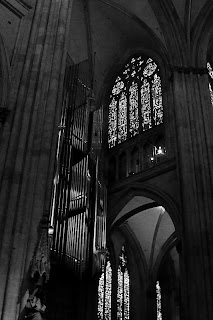The last of the leaves are rapidly disappearing from the scene, leaving us with the dark, twisted branches of winter. The last few days have provided some opportunities for getting out and making your autumn shots a reality, so I hope you’ve managed to bring home some nice color! I’ve managed to shoot 3 rolls of Provia 100F from Fuji. The colors on this film are incredible! I hope to have some to share before too awfully long! I also managed to get in 10 sheets of Kodak’s Ektar 100 in large format. While a punchy, saturated film, the right shots take on a life of their own, which I hope to present.
Now, on to today’s topic. We’re going to give a quick rundown of 3 places to visit within 30 minutes drive of Hohenfels. There are quite a few other places, and most have information available online.
First on our list is the Thurn und Taxis palace in Regensburg. This is a palace in the heart of Regensburg, near the train station. It is occupied by the Prince of Thurn and Taxis. The family created the postal service for Europe some 300ish years ago. A lovely place with regular tours, the tour also includes some of St. Emmeram's, an old monastery. The gardens of the palace are beautiful, and the little park just outside the actual palace grounds is quite nice, also.
More information is available at this site.
Next up is Walhalla. Walhalla is just outside Regensburg, on the Danube. Built as a replica of the Parthenon, Walhalla is a tribute to Germanic speaking people who have contributed to the world in general. There are many busts and statues inside, and the view outside is incredible. It’s also a great place for a picnic and fall colors.
Click here for more about Walhalla.
Here are some pics from our next site, Kelheim.

ISO 100, f/16, 1/25
This is one of the many views from atop the Befreiungshalle in Kelheim. One can walk around the entire outside from 2 upper levels, which give you a 360 degree view of the surrounding area. It's worth the climb, but don't don't forget your camera!

ISO 1250, f/5.6, 1/80
This is inside the Church at Weltenburg. A 20 minute ferry ride from Kelheim, this monastery is the perfect place to enjoy a nice lunch and some photographic treasures! The meals served here come in extra large sizes, so bring your appetite.
Kelheim is a fantastic little town on the banks of the Danube, where it meets the Altmuhl River. Above Kelheim is the Befreiungshalle. The Befreiungshalle was built to commemorate the victories over Napoleon. The Winged victories inside have shields made from melted down canons and the door is cased in metal from melted canon balls. The town has some beautiful scenery, and is a great place to have some iced chocolate on a summer afternoon at one of the sidewalk cafes. You can even hop a ferry to the Weltenburg Abbey, where they brew some fantastic beer and enjoy a wonderful meal while waiting to catch the next ferry back.
Of course, to get the full scoop about the Befreiungshalle, click here
While none of the information is exhaustive here, I hope it will give you some ideas about how close things are. A wonderful afternoon with friends or family, or making some great shots, are all within a short distance of our place!
We want you to share your photos, especially of our place, with us on our Hohenfels Volks Facebook page. You can also e-mail questions, photos, or comments to HohenfelsVolks(at)tks-net.com, and we’ll get them posted!
Is there anything you’d like to see here? Do you have a question? Share your thoughts here or at the Hohenfels Volks Facebook page. Of course, commenting on both Facebook and here is always appreciated, too! Don't forget, we're on Google+, too!





